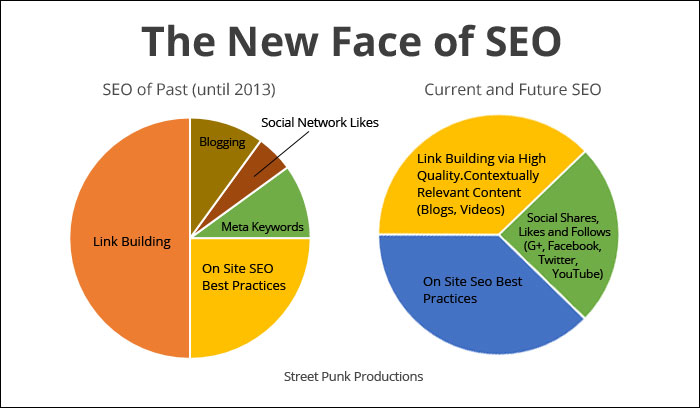How to Improve Website SEO Ranking: Proven Strategies

To improve your website’s SEO ranking, focus on high-quality content and build backlinks. Optimize your site for mobile users and speed.
Improving your website’s SEO ranking is essential for attracting organic traffic and increasing visibility. High-quality content engages users and keeps them on your site longer. Building backlinks from reputable sources boosts your site’s authority. Mobile optimization ensures a seamless experience for users on all devices.
Speed is crucial as slow-loading sites drive users away. Regularly updating your content signals to search engines that your site is active. Use relevant keywords naturally within your content. Ensure your site is secure with HTTPS. Implementing these strategies will help improve your website’s SEO ranking and drive more traffic.

Credit: studioc5.com
Importance Of Seo
The Importance of SEO cannot be overstated. It helps websites rank higher on search engines. Higher rankings lead to more visibility and traffic. This, in turn, boosts brand awareness and revenue.
Boosting Online Visibility
SEO boosts online visibility by improving your website’s ranking. Search engines like Google use algorithms to rank sites. Good SEO practices ensure your site meets these criteria. This makes it more likely to appear in top search results.
Use keywords relevant to your business. Add these keywords naturally in your content. Your website should load quickly. A fast site improves user experience and helps SEO. Make sure your site is mobile-friendly. Many users search on mobile devices.
Driving Organic Traffic
Organic traffic is visitors who find your site via search engines. Unlike paid ads, organic traffic is free. This makes it valuable for any business.
To drive more organic traffic, create high-quality content. Your content should answer questions your audience has. Use keywords wisely in your content. Search engines will rank your site higher for relevant searches.
| SEO Practice | Benefit |
|---|---|
| Keyword Optimization | Higher search rankings |
| Fast Loading Speed | Better user experience |
| Mobile-Friendly Design | Increased mobile traffic |
Below is a simple SEO checklist:
- Use relevant keywords
- Ensure fast loading speed
- Make your site mobile-friendly
- Create high-quality content
By following these steps, you can improve your website’s SEO ranking. This will lead to increased online visibility and more organic traffic.
Keyword Research
Keyword research forms the bedrock of any successful SEO strategy. It helps you understand what your audience is searching for. Proper keyword research drives more traffic to your website. It aids in ranking higher on search engine result pages (SERPs). Let’s dive into the essential aspects of keyword research.
Finding Relevant Keywords
Finding relevant keywords involves understanding your audience’s needs. Use tools like Google Keyword Planner or Ahrefs. These tools help identify popular search terms. Look for keywords with high search volume and low competition. This balance ensures better chances of ranking high.
Here’s a simple table to understand keyword metrics:
| Metric | Description |
|---|---|
| Search Volume | The number of times a keyword is searched. |
| Competition | The number of websites competing for the keyword. |
| CPC (Cost Per Click) | Average cost of a paid ad for the keyword. |
Using Long-tail Keywords
Long-tail keywords are longer and more specific phrases. They usually have less competition and are easier to rank for. For instance, instead of targeting “shoes,” focus on “best running shoes for kids”. This specific phrase targets a more precise audience.
Benefits of using long-tail keywords:
- Higher conversion rates
- Less competition
- More targeted traffic
Here’s an example of long-tail keywords versus short-tail keywords:
| Short-Tail Keyword | Long-Tail Keyword |
|---|---|
| shoes | best running shoes for kids |
| SEO | how to improve website SEO ranking |
Incorporate long-tail keywords into your content naturally. This improves your chances of ranking higher on SERPs. It attracts more relevant traffic to your website.
On-page Optimization
On-Page Optimization is crucial for improving your website’s SEO ranking. This involves making changes directly on your website to make it more search engine friendly. Below, we discuss key strategies to optimize your on-page elements.
Optimizing Meta Tags
Meta tags are essential for SEO. These tags help search engines understand your content.
- Title Tag: Keep it under 60 characters. Include primary keywords.
- Meta Description: Write a compelling summary. It should be under 160 characters.
- Header Tags: Use <h1> for the main title of your page. Subheading should follow a structured hierarchy, using <h2> to <h6> to break up your content. These tags help search engines and users navigate the content and understand its structure.
- Alt Text for Images: Always include descriptive alt text for images. This helps search engines understand the content of images, improving your page’s SEO, and it also enhances accessibility.
- Canonical Tags: Use canonical tags to prevent duplicate content issues. If you have multiple pages with similar content, a canonical tag points search engines to the preferred version of the page.
Optimizing these meta tags can significantly improve your site’s search engine visibility, user experience, and click-through rates.
Improving Content Quality
High-quality content is vital for SEO. It keeps users engaged and increases dwell time.
- Original Content: Avoid duplicate content. Always create unique articles.
- Keyword Usage: Use keywords naturally. Avoid keyword stuffing.
- Readability: Use short sentences. Make paragraphs no longer than 3 sentences.
- Multimedia: Add images, videos, and infographics. They make content engaging.

Credit: www.practicebuilders.com
Technical Seo
Technical SEO focuses on optimizing your website’s backend. This enhances your site’s performance and helps search engines crawl and index your content effectively. In this section, we will cover two crucial aspects of Technical SEO: Enhancing Site Speed and Ensuring Mobile-Friendliness.
Enhancing Site Speed
Site speed significantly impacts user experience and SEO ranking. A slow website can frustrate users and lead to higher bounce rates.
- Use a reliable web hosting service.
- Optimize images by compressing them.
- Enable browser caching to reduce load times.
- Minify CSS, JavaScript, and HTML files.
- Use a Content Delivery Network (CDN) to serve content faster.
By implementing these steps, you can ensure your site loads quickly. This improves user satisfaction and boosts your search engine ranking.
Ensuring Mobile-friendliness
Most users browse the internet on mobile devices. Google prioritizes mobile-friendly websites in search results.
- Use responsive web design to adapt to different screen sizes.
- Ensure fonts are readable on smaller screens.
- Optimize images and videos for mobile devices.
- Avoid using Flash, as it is not supported on most mobile devices.
- Test your site using Google’s Mobile-Friendly Test tool.
Making your website mobile-friendly enhances user experience and improves your SEO ranking. Ensure your website performs well on all devices.
Improving site speed and ensuring mobile-friendliness are key aspects of Technical SEO. These steps will help you achieve a higher SEO ranking and provide a better user experience.
Content Strategy
To boost your website’s SEO ranking, a solid content strategy is essential. Content is king, and creating valuable, relevant content can significantly improve your search engine visibility. Let’s dive into the key aspects of a successful content strategy.
Creating Valuable Content
Creating valuable content is the cornerstone of SEO. Here are some tips:
- Identify your audience’s needs and interests.
- Use keyword research tools to find popular search terms.
- Write informative, engaging articles that solve problems.
- Use a mix of text, images, and videos.
- Ensure your content is original and free of plagiarism.
Updating Existing Content
Updating existing content keeps your site fresh and relevant. Follow these steps:
- Review your old posts regularly.
- Update outdated information.
- Add new insights and data.
- Refresh visuals and media.
- Improve readability and structure.
Here is a quick comparison of new vs. updated content:
| Aspect | New Content | Updated Content |
|---|---|---|
| Focus | New topics | Current topics |
| SEO Impact | Long-term growth | Immediate boost |
| Effort | High | Medium |
Backlink Building
Backlink building is crucial for improving your website’s SEO ranking. Backlinks act like votes of confidence from other websites. They tell search engines your site has valuable content. This section will show how to earn quality backlinks and avoid spammy links.
Earning Quality Backlinks
Earning quality backlinks requires effort and strategy. Follow these tips to get the best results:
- Create High-Quality Content: Write informative and engaging articles. People will naturally link to good content.
- Guest Blogging: Write guest posts for reputable sites. Include a link back to your site in the author bio.
- Build Relationships: Network with other website owners. They might link to your content if they find it valuable.
- Use Infographics: Design interesting infographics. Others will share and link to them.
Avoiding Spammy Links
Not all backlinks are good. Spammy links can hurt your SEO ranking. Here’s how to avoid them:
- Avoid Link Farms: These are sites that exist only to provide backlinks. They can be harmful.
- Check Domain Authority: Use tools to check the domain authority of the linking site. Low authority sites can be spammy.
- Stay Clear of Irrelevant Links: Links should come from related websites. Irrelevant links can confuse search engines.
- Monitor Your Backlinks: Regularly check your backlinks. Use tools to identify and disavow bad links.
By focusing on earning quality backlinks and avoiding spammy links, you improve your site’s SEO ranking. Remember, quality always trumps quantity in the world of backlinks.
User Experience
Improving your website’s SEO ranking starts with enhancing the user experience. A positive user experience keeps visitors engaged and happy. This leads to better search engine rankings. Let’s dive into how you can improve your site’s user experience.
Improving Site Navigation
Good site navigation helps users find information quickly. Follow these tips to enhance your navigation:
- Use a simple, clear menu structure.
- Group related pages together.
- Include a search bar for easy access.
- Ensure all links are working.
- Keep important content above the fold.
Make sure your site is mobile-friendly. Most users access websites on their phones. Check your website’s speed. A fast-loading site keeps visitors happy. Use tools like Google’s PageSpeed Insights for help.
Reducing Bounce Rate
A high bounce rate means users leave your site quickly. Reduce bounce rate with these steps:
- Create engaging, relevant content.
- Use clear, attractive headings.
- Add images and videos to break up text.
- Make sure your site is easy to read.
- Use a clean, simple design.
| Action | Effect |
|---|---|
| Improve page load speed | Users stay longer |
| Use engaging visuals | Increase user interaction |
| Write clear, concise content | Better user understanding |
Regularly update your content. Fresh content keeps users coming back. Analyze user behavior using tools like Google Analytics. Understand what users enjoy and improve weak areas. A low bounce rate indicates a positive user experience.
Monitoring And Analytics
Monitoring and analytics are crucial for improving your website’s SEO ranking. They help you understand what’s working and what needs improvement. By consistently tracking performance, you can make data-driven decisions that boost your site’s visibility.
Using Seo Tools
SEO tools are essential for tracking your website’s performance. They offer insights and data to optimize your site.
- Google Analytics: Tracks website traffic and user behavior.
- Google Search Console: Monitors search performance and indexing issues.
- Ahrefs: Provides backlink analysis and keyword research.
- SEMrush: Offers comprehensive SEO audits and competitive analysis.
Using these tools, you can identify areas that need improvement. They help track keyword rankings, backlinks, and website traffic.
Analyzing Performance Metrics
Analyzing performance metrics helps you understand your website’s strengths and weaknesses. Focus on these key metrics:
| Metric | Description |
|---|---|
| Organic Traffic | The number of visitors from search engines. |
| Bounce Rate | The percentage of visitors who leave after viewing one page. |
| Average Session Duration | The average time visitors spend on your site. |
| Page Load Time | The time it takes for a page to load completely. |
Improving these metrics can significantly enhance your SEO ranking. For instance, reducing bounce rate can improve user engagement.
Regularly monitor these metrics to understand user behavior and make necessary adjustments.

Credit: leadgenera.com
Frequently Asked Questions
How Can I Improve My Website’s Seo Ranking?
To improve your website’s SEO ranking, focus on quality content, keyword optimization, and mobile-friendliness. Also, use metadata effectively and build high-quality backlinks. Regularly update your content.
What Are The Best Seo Practices For Beginners?
For beginners, start with keyword research, optimize meta tags, and ensure fast page loading speeds. Use alt text for images and create a sitemap. Regularly update your content.
Why Is Keyword Research Important For Seo?
Keyword research helps you understand what your audience is searching for. It allows you to optimize your content to rank higher in search results, attracting more traffic.
How Does Mobile-friendliness Affect Seo Ranking?
Mobile-friendliness is crucial for SEO because search engines prioritize mobile-optimized sites. A mobile-friendly website enhances user experience, leading to better rankings and more traffic.
Conclusion
Boosting your website’s SEO ranking requires consistent effort and smart strategies. Focus on quality content, proper keywords, and backlinks. Regularly update your site and ensure mobile-friendliness. Monitor performance with analytics tools. Implementing these steps can significantly improve your website’s visibility and search engine ranking.
Start today and watch your site grow.









